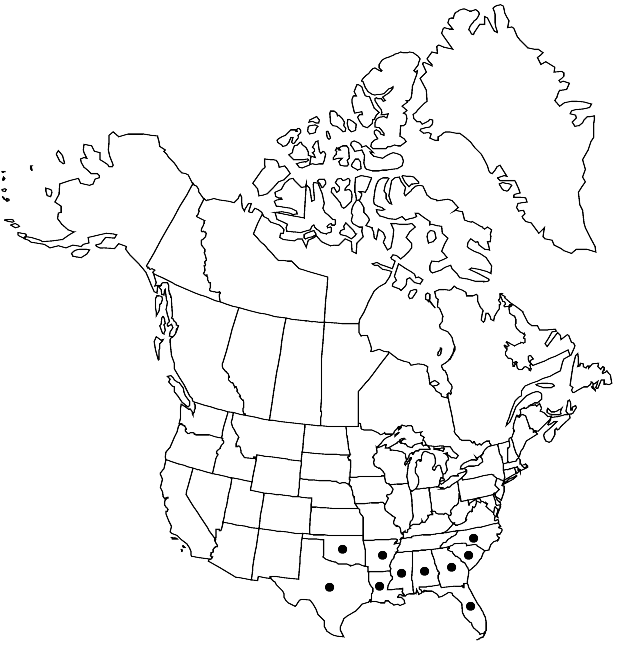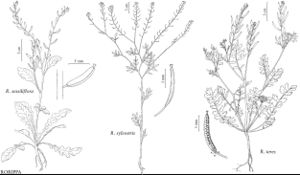Rorippa teres
Sida 2: 409. 1966.
Annuals or, rarely, biennials; puberulent, at least proximally, or glabrous, (some trichomes clavate to hemispherical, vesicular). Stems (simple or several from base), usually prostrate or decumbent, rarely erect, branched distally, 1–4 dm, (glabrous or pubescent, trichomes vesicular). Basal leaves rosulate; blade margins pinnatifid. Cauline leaves shortly petiolate; blade oblong, oblanceolate to obovate, or lyrate-pinnatisect, (lateral lobes oblong to ovate), (2–) 3.5–10 (–13.5) cm × 10–40 (–53) mm, base auriculate or not, margins usually pinnatifid to pinnatisect, rarely 2-pinnatifid, (lateral lobes) dentate to crenate or sinuate, (surfaces glabrous or adaxially pubescent, trichomes vesicular). Racemes elongated. Fruiting pedicels ascending to horizontal, straight or curved-ascending, (1.5–) 2.3–4.7 (–5.3) mm. Flowers: sepals erect, oblong, 1.5–2.5 × 0.5–1 mm; petals yellow, spatulate, 1–2 × 0.4–0.7 mm; median filaments 1.2–1.7 mm; anthers ovate, 0.2–0.3 mm. Fruits siliques, straight or curved, linear to oblong-linear, 8–14 (–21) × 1–2.5 mm; valves glabrous or pubescent; ovules (100–) 150–210 per ovary; style (0.2–) 0.5–1.1 mm. Seeds biseriate, reddish-brown, cordiform, 0.4–0.5 mm, foveolate.
Phenology: Flowering Dec–May.
Habitat: Wet areas, muddy grounds, edges of canals and ditches, sandy fields, margins of ponds, streamsides, peat
Elevation: 0-600 m
Distribution

Ala., Ark., Fla., Ga., La., Miss., N.C., Okla., S.C., Tex., Mexico, Central America (Honduras), Central America (Nicaragua)
Discussion
Selected References
None.
Lower Taxa
"elongated" is not a number."thick" is not a number."dm" is not declared as a valid unit of measurement for this property.
